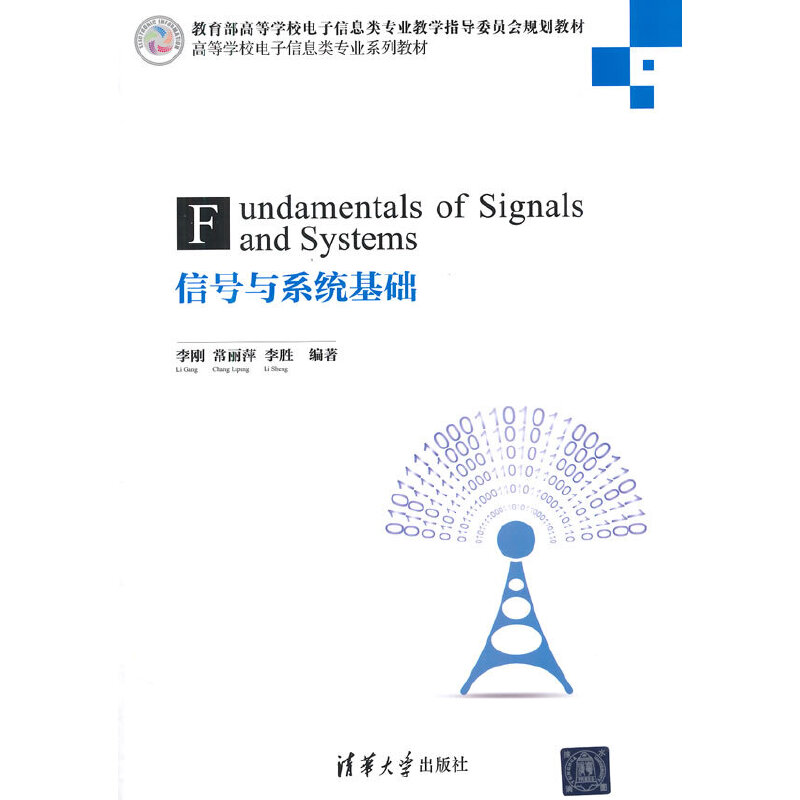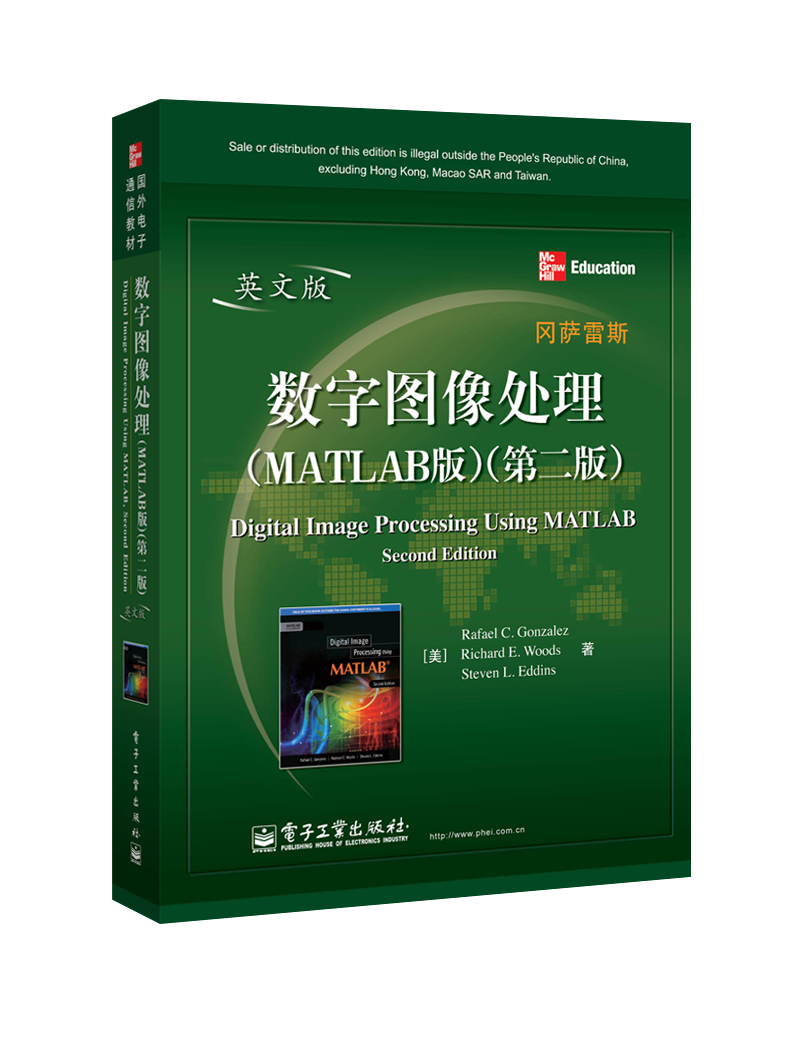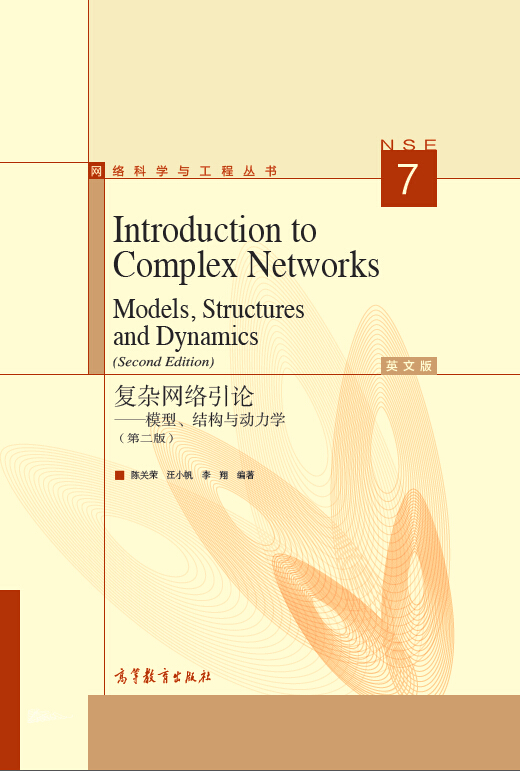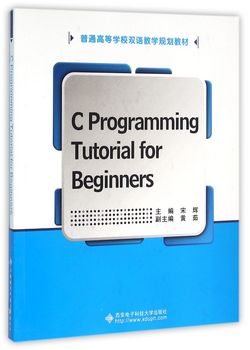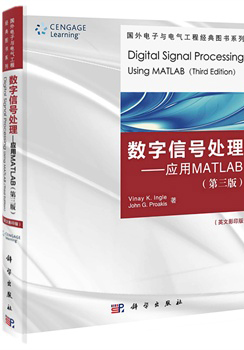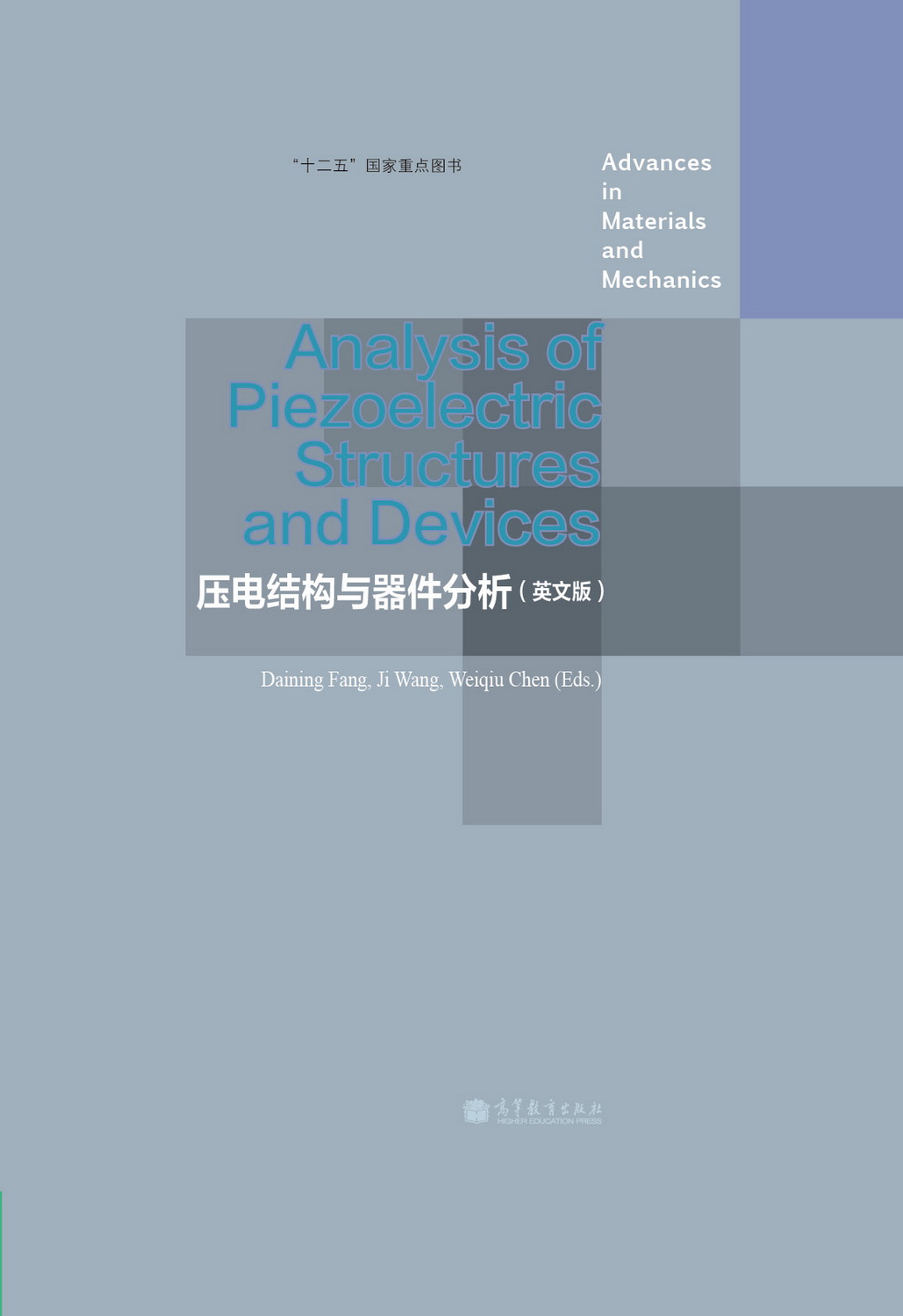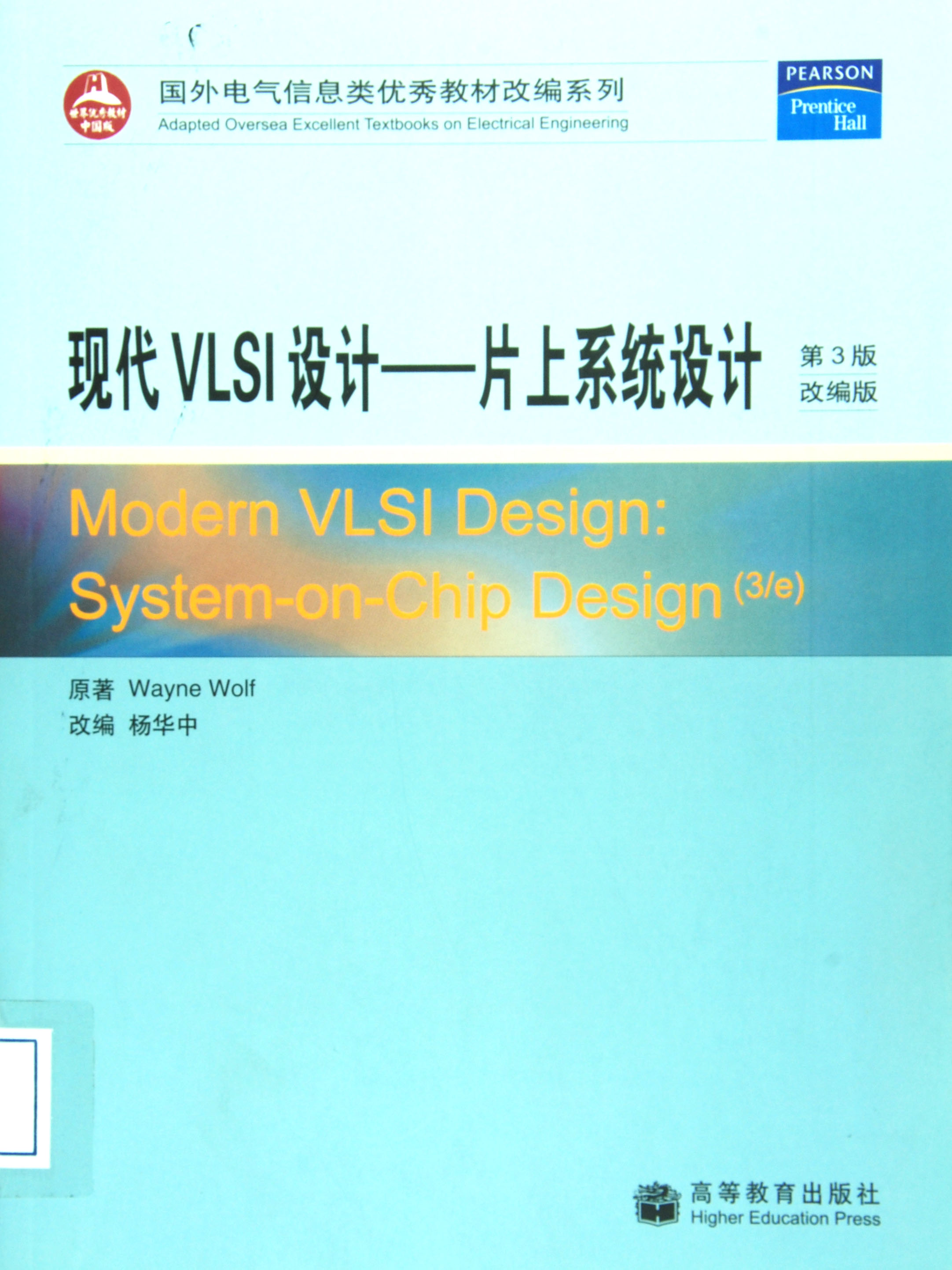信号与系统基础 / 高等学校电子信息类专业系列教材
定价:¥36.00
作者: 李刚,常丽萍主编
出版时间:2015-01
出版社:清华大学出版社
- 清华大学出版社
- 9787302385981
- 1-1
- 156492
- 16开
- 2015-01
- TN911.6
- 电工电子
- 高职
内容简介
“信号与系统”是电气工程、电子信息工程、通信工程和自动化等本科专业最重要的基础课程之一。本教材对应于“信号与系统”全国双语示范课程。书中凝练了作者多年的教学经验及心得,针对国内双语及全英文教学现状,力求培养学生的自学能力和分析问题的能力。 本书: 1)文字简练, 内容安排上采用模拟-离散双域交替的方式。 2)在处理常系数线性微分(差分)方程及由其描述的线性时不变系统与变换的关系上有独到之处。 3)知识体系完整,系统及逻辑性强, 同时也适用于自学。详见书中前言(Preface)部分。
目录
1.4.3 Invertibility
1.4.4 Stability
1.4.5 Time-invariance
1.4.6 Linearity
1.5 Summary
1.6 Problems
Chapter 2 Time-domain Analysis of LTI Systems
2.1 Introduction
2.2 The unit impulse response and convolutions
2.2.1 The convolution sum ~
2.2.2 The convolution integral
2.3 Properties of convolutions and equivalent systems
2.4 Causality and stability of LTI systems
2.5 Systems constrained with LCCDEs
2.5.1 Continuous-time systems constrained with LCCDEs
2.5.2 Discrete-time systems characterized by LCCDEs
2.6 Summary
2.7 Problems
Chapter 3 Fourier Analysis of Signals
3.1 Introduction
3.2 Fourier series for continuous-time periodic signals
3.3 Fourier series for discrete-time periodic signals
3.4 Why should a signal be transformed?
3.5 Fourier transform for continuous-time signals
3.5.1 Properties of Fourier transform
3.5.2 Inverse Fourier transform
3.6 The discrete-time Fourier transform
3.6.1 Properties of DTFT
3.6.2 Inverse DTFT
3.7 Fourier series and Fourier transforms
3.8 Summary
3.9 Problems
Chapter 4 Frequency-domain Approach to LTI Systems
4.1 Introduction
4.2 Frequency response of LTI systems
4.3 Bode plots for continuous-time LTI systems
4.4 Frequency response of LTIs described with LCCDEs
4.5 Frequency domain approach to system outputs
4.6 Some typical LTI systems
4.6.1 All-pass systems
4.6.2 Linear phase response systems
4.6.3 Ideal filters
4.6.4 Ideal transmission channels
4.7 Summary
4.8 Problems
Chapter 5 Discrete Processing of Analog Signals
5.1 Introduction
5.2 Sampling of a continuous-time signal
5.3 Spectral relationship and sampling theorem
5.4 Reconstruction of continuous-time signals
5.5 Hybrid systems for discrete processing
5.6 Discrete Fourier transform
5.7 Compressed sensing
5.8 Summary
5.9 Problems
Chapter 6 Transform-domain Approaches
6.1 Motivation
6.2 The Laplace transform
6.2.1 Derivation of the transform
6.2.2 Region of convergence
6.2.3 Inverse Laplace transform
6.2.4 Properties of Laplace transform
6.3 The z-transform
6.3.1 Region of convergence
6.3.2 Properties of the z-transform
6.3.3 Inverse z-transform
6.4 Transform-domain approach to LTI systems
6.4.1 Transfer function of LTI systems
6.4.2 Inverse systems of LTIs and deconvolutions
6.4.3 Revisit of LTI system's stability and causality
6.4.4 Transfer function of LTI systems by LCCDEs
6.5 Transform domain approach to LCCDEs
6.6 Decomposition of LTI system responses
6.7 Unilateral transforms
6.7.1 Unilateral Laplace transform
6.7.2 Unilateral z-transform
6.8 Summary
6.9 Problems
Chapter 7 Structures and State-space Realizations
7.1 Block-diagram representation
7.2 Structures of LTIs with a rational transfer function
7.3 State-space variable representation
7.3.1 State model and state-space realizations
7.3.2 Construction of an equivalent state-space realization
7.3.3 Similarity transformations
7.4 Discretizing a continuous-time state model
7.5 Summary
7.6 Problems
Chapter 8 Comprehensive Problems
8.1 Motivation
8.2 Problems
Appendices
Bibliography
1.4.4 Stability
1.4.5 Time-invariance
1.4.6 Linearity
1.5 Summary
1.6 Problems
Chapter 2 Time-domain Analysis of LTI Systems
2.1 Introduction
2.2 The unit impulse response and convolutions
2.2.1 The convolution sum ~
2.2.2 The convolution integral
2.3 Properties of convolutions and equivalent systems
2.4 Causality and stability of LTI systems
2.5 Systems constrained with LCCDEs
2.5.1 Continuous-time systems constrained with LCCDEs
2.5.2 Discrete-time systems characterized by LCCDEs
2.6 Summary
2.7 Problems
Chapter 3 Fourier Analysis of Signals
3.1 Introduction
3.2 Fourier series for continuous-time periodic signals
3.3 Fourier series for discrete-time periodic signals
3.4 Why should a signal be transformed?
3.5 Fourier transform for continuous-time signals
3.5.1 Properties of Fourier transform
3.5.2 Inverse Fourier transform
3.6 The discrete-time Fourier transform
3.6.1 Properties of DTFT
3.6.2 Inverse DTFT
3.7 Fourier series and Fourier transforms
3.8 Summary
3.9 Problems
Chapter 4 Frequency-domain Approach to LTI Systems
4.1 Introduction
4.2 Frequency response of LTI systems
4.3 Bode plots for continuous-time LTI systems
4.4 Frequency response of LTIs described with LCCDEs
4.5 Frequency domain approach to system outputs
4.6 Some typical LTI systems
4.6.1 All-pass systems
4.6.2 Linear phase response systems
4.6.3 Ideal filters
4.6.4 Ideal transmission channels
4.7 Summary
4.8 Problems
Chapter 5 Discrete Processing of Analog Signals
5.1 Introduction
5.2 Sampling of a continuous-time signal
5.3 Spectral relationship and sampling theorem
5.4 Reconstruction of continuous-time signals
5.5 Hybrid systems for discrete processing
5.6 Discrete Fourier transform
5.7 Compressed sensing
5.8 Summary
5.9 Problems
Chapter 6 Transform-domain Approaches
6.1 Motivation
6.2 The Laplace transform
6.2.1 Derivation of the transform
6.2.2 Region of convergence
6.2.3 Inverse Laplace transform
6.2.4 Properties of Laplace transform
6.3 The z-transform
6.3.1 Region of convergence
6.3.2 Properties of the z-transform
6.3.3 Inverse z-transform
6.4 Transform-domain approach to LTI systems
6.4.1 Transfer function of LTI systems
6.4.2 Inverse systems of LTIs and deconvolutions
6.4.3 Revisit of LTI system's stability and causality
6.4.4 Transfer function of LTI systems by LCCDEs
6.5 Transform domain approach to LCCDEs
6.6 Decomposition of LTI system responses
6.7 Unilateral transforms
6.7.1 Unilateral Laplace transform
6.7.2 Unilateral z-transform
6.8 Summary
6.9 Problems
Chapter 7 Structures and State-space Realizations
7.1 Block-diagram representation
7.2 Structures of LTIs with a rational transfer function
7.3 State-space variable representation
7.3.1 State model and state-space realizations
7.3.2 Construction of an equivalent state-space realization
7.3.3 Similarity transformations
7.4 Discretizing a continuous-time state model
7.5 Summary
7.6 Problems
Chapter 8 Comprehensive Problems
8.1 Motivation
8.2 Problems
Appendices
Bibliography

